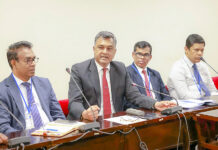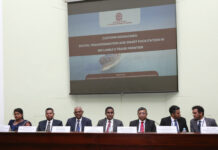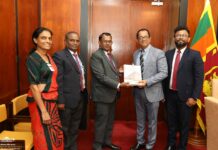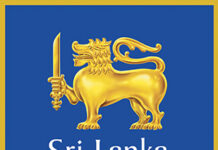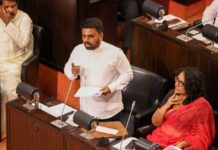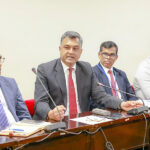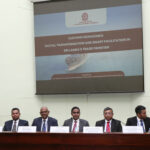Compiled by Gp Capt Kumar Kirinde, SLAF (Retd)
Kamal Chunchie (1886 – 1953) was the eldest of nine children born in Ceylon to parents of Malay origin. His father was one of the leading Malay figures in Ceylon. He was educated at Kingswood College, Kandy. In 1915 his adventurous streak saw him enlist in the public schools battalion, 3rd Middlesex regiment, joining around 28,500 other South Asian troops in the trenches fighting in the First World War. He saw active service on the Western Front, in Italy and Salonika. Chunchie converted to Christianity while convalescing in an Army hospital in Malta.
He arrived in London from Malta on 6 March 1918 and after the war he remained in the UK and by 1920 was living in the East End of London. He was appalled by the way black people were treated, and he wanted to improve the social aspects of their lives. To achieve his aim he became a Methodist minister working in race relations and founded the Coloured Men’s Institute in East London
A little known hero from Ceylon who campaigned for the rights of Black and Asian minorities in East London at the end of WW1
Compiled by Tina Edward Gunawardhana
Kamal Athon Chunchie was a Methodist minister and the founder of ‘The Coloured Men’s Institute’ in Tidal Basin Road, Victoria Docks, Canning Town, East London. He was the eldest of nine children born in Ceylon to parents of Malay origin. His father was one of the leading Malay figures in Ceylon. He was educated at Kingswood College, Kandy. In 1915 his adventurous streak saw him enlist in the public schools battalion, 3rd Middlesex regiment, joining around 28,500 other South Asian troops in the trenches. During the First World War, he saw active service on the Western Front, in Italy and Salonika. Chunchie converted to Christianity while convalescing in an Army hospital in Malta. He arrived in London on 6 March 1918.
Towards the end of the war, while stationed in Chatham, he met Mable Tappan, who was also stationed there as a member of the Women’s Army Auxiliary Corps. They married in July 1920 and had one daughter, Muriel. In December 1921, Chunchie began to work as a missionary for the Wesleyan Methodist Missionary Society among the Asian, Chinese, African and Caribbean sailor community in the Canning Town area of London. He initially took up a position at the Queen Victoria Seamen’s Rest in Poplar, which was affiliated with the Wesleyan Methodist Missionary Society. He would visit the local residents and the seamen population in ships, hospitals, and lodging-houses, preaching to them and providing material assistance. His missionary and philanthropic work also extended to the small ethnic minority community resident in the docklands, many married to white partners, and their children, as well as colonial and Indian students. Chunchie spoke out against racism and the plight of the dispossessed in the East End which he saw as incompatible with Britain’s Christian values.
In 1923, he rented a hall in Swanscombe Street, where he founded the Docklands’ first black Wesleyan Methodist church, and a Sunday school. During his efforts to counter racist discrimination of the black and Asian population he lobbied for the establishment of an organization that catered for London’s East End’s black and Asian community, a plan that came to being in 1926 with the establishment of the Coloured Men’s Institute (CMI) in Tidal Basin Road, Canning Town. It was a religious, social and welfare centre for sailors and local residents with Chunchie at the helm as the responsible pastor and warden. He spoke eight languages and sometimes preached in six different languages at the same service! The church wanted to send him abroad as a missionary but he refused as he felt that there was so much to be done in the east end of London.


From 1926 until the center’s demolition as part of the West Ham Road widening scheme in 1930, Chunchie worked tirelessly as a fund-raiser to keep the centre open, addressing Methodist gatherings all over the UK. He was an accomplished speaker, invoking the Christian ideals of equality and brotherhood to combat racism, unmasking the hypocrisy of Christian England and its attitudes to race. Chunchie was well-respected and well-liked by the black community in East London; however he faced criticism from the East End Branch of the Universal Negro Improvement Association, who accused Chunchie of patronizing black people and fostering segregation. Chunchie was also criticized by the Methodist Mission House over his management of the CMI. After 1930, no plans were drawn up to reopen the CMI elsewhere and Chunchie worked as a missionary deputation in the home church from 1930 to 1932.
Chunchie, however, would continue to work tirelessly to relaunch the CMI as an independent organization. With the support of a multi-racial council that included Dr Harold Moody of the League of Coloured Peoples, Professor R. K. Sorabji, and Lady Lydia Anderson and dedicated volunteers, amongst them his wife, he worked hard to build a new CMI. However, due to a lack of funding this never came to fruition, which meant that Chunchie had to use the limited facilities of the Presbyterian Church in Victoria Dock Road as the centre and his own home as a base to continue the numerous pastoral, charitable and religious activities of the CMI.
An active member of the community, Chunchie played cricket for Essex, was a member of the Royal Empire Society (from 1935), and was vice-president of the League of Coloured Peoples (1935–7). During the Second World War he was a member of the voluntary firefighting party in Lewisham, South London. In 1943 he also attended meetings of Swaraj House.
After years of selflessly giving his services to the downtrodden Black and Asian community, Chunchie suffered a heart attack and died on 28th June 1953. Remembered as one of the pioneering coloured men of East London who strove to uplift the community.
By Kurt Barling
Kurt Barling writes about the unusual collection of photographs he discovered visiting 87-year-old Muriel Chunchie in her Lewisham home which gives a glimpse of those hidden stories.
There is a saying that the further back you go into the past the more clearly you can see the shape of the future.
In the case of London’s minority communities; the closer you look at the past, the more clearly you understand the reason for our present. This remains the raison d’etre for Black History month.
Take the story of Muriel Chunchie’s father Kamal Chunchie who was born into a prominent Muslim family in Kandy Ceylon in 1886.
He attended the newly created Christian mission school, Kingswood College, which was set up along classic British public school lines. After leaving school he ended up joining the Singapore Police.
When the First World War broke out he doggedly attempted to sign up in Singapore. After several rejections he paid his own way to England and managed to join the Public School Battalion of the Middlesex Regiment. Whilst on the battlefront he confirmed his conversion to Christianity.
Back in Civvy Street he trained as a Methodist minister and immediately showed the maverick tendencies he would display for the rest of his career.
His Methodist superiors wanted to dispatch him to the farther reaches of the Empire. Missionary work was central to its “civilizing” objectives.
Bu Chunchie’s tough experiences of discrimination and prejudice in London’s dock districts taught him of the difficult life for the black and Asian population in places like Canning Town.
As far as Kamal Chunchie was concerned there was plenty of missionary work to be done in the beating heart of Empire. It was an attitude that would keep him in conflict with the Methodist ministry, until the hierarchy eventually ostracized him.
On 9th February 1926 he opened the Coloured Men’s Institute in Canning Town, probably the first community organization of its kind. His daughter recalls Kamal shunning the possibility of being sent on Methodist missionary elsewhere in the Empire because there was so much work to be done, in his view, to put their own house in order right here in London.
The following extract written by a commentator in the Daily Express in the early 1930s describing the condition of mixed-raced children in the dockside areas where the CMI operated is a clear illustration of the challenges Kamal faced.
“There are about 600 children in all and in 98 per cent of cases their mother is white. Poor little half-castes, looked down and jeered at from their childhood upwards, grow up with bitterness in their hearts against the white race and all for which that stands…..
“Born in a strange, murky, hostile land, brought up amid sneers and insults, launched while still in their teens upon a life barren of almost everything but dirt, disease and despair, without race, with no country that they can call their own, knowing no tongue but the cockney idiom of their tormentors, outcast and bereft of friends…these are the little Londoners whom human mercy and kindness seem to have passed by.”
A small fragment of Muriel Chunchie’s family photograph archive has now been collated and organized into a traveling and online exhibit by Eastside Community Heritage.
The pictures of a mixed community are a bit of a revelation. The more relaxed and happy faces in these private pictures, moreover, reflect an alternative reality to that bleak one painted by the Daily Express.
It is trying to capture the balanced picture of this past for which Eastside has just received support for its long-standing efforts to record oral histories of the fast vanishing communities of the East End.
Conscious of the impending changes with 2012 fever, the Heritage Lottery Fund has awarded them half a million pounds to marshall the evidence and preserve it for posterity.
The archive gives a remarkable insight into a vibrant mixed community in Canning Town during the 1920s and 1930s. Centered on the social activities of the Coloured Men’s Institute, there are pictures of trips to seaside resorts like Leigh-on-Sea and Camber Sands along with other destinations.
The faces of dozens of black, Asian and mixed- heritage children accompanied by their white mothers, shows how limited our picture of the past has often been. Whilst these pictures have only recently been put on public display, one wonders how many more private collections could offer such insights.
The photographers were obviously keen to follow this East End “missionary” at work and play. There are dozens of pictures of the Essex County Cricket Club in the 1930s where Chunchie regularly featured. Ten black and brown faces in one picture of the 2nd XII.
Perhaps some of the most surprising group photographs are in the years leading up to the outbreak of war in 1939. In some pictures over a hundred faces scream out at the viewer to challenge the notion that London’s diversity is a phenomenon of the 1960s onwards.
Amongst the archive are newspaper articles from the 1930s which also reflect that British society was aware of the hardships and cruelty suffered by black and Asian communities. Commentators challenged the way the “N” word was so liberally used to insult and denigrate the dock workers and their families.
Kamal Chunchie’s Coloured Men’s Institute (CMI) fight for the rights of minorities was a simple precursor to campaigns in later decades.
The CMI on Tidal Basin road was to suffer a double blow to its work. Firstly at the end of the 1930s road development meant that their premises had to be demolished and they were force to move premises.
But more dramatically the Blitz in 1940 dispersed Chunchie’s flock across the Capital and beyond as Canning Town faced the full brunt of the German Luftwaffe’s onslaught.
Kamal Chunchie didn’t disappear. He continued to travel the country giving sermons after WWII but a new Labour administration under Clement Attlee helped directly to tackle some of the worst aspects of poverty.
Housing and health became national priorities and in the bleak post-war years the government put a lot of focus on ensuring all children received education and nourishment through the introduction of school dinners.
Chunchie continued his missionary work and sermons until early 1953 although on a much smaller scale. He died in June that year virtually penniless.
His daughter Muriel wrote to the CMI’s supporters shortly afterwards to say her and her mother were not in a position to continue his work and the CMI, 27 years after it was formed, closed down.
But his daughter’s archive is an inspired way to remember Kamal Chunchie’s work and the mixed community he served in pre-war Canning Town.




